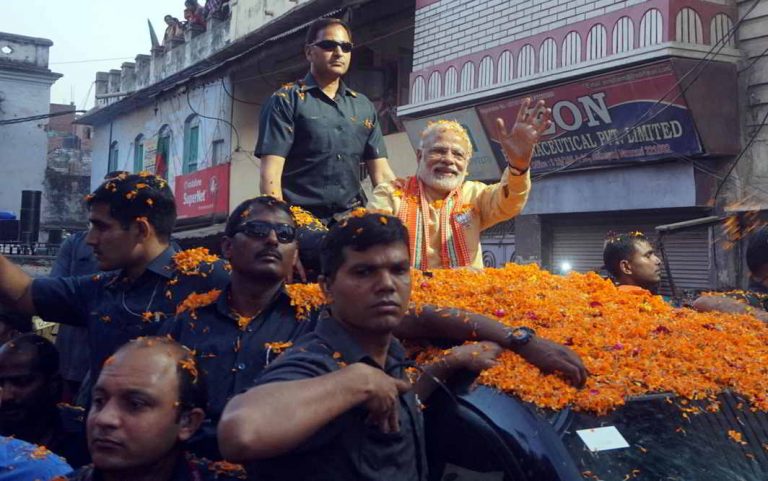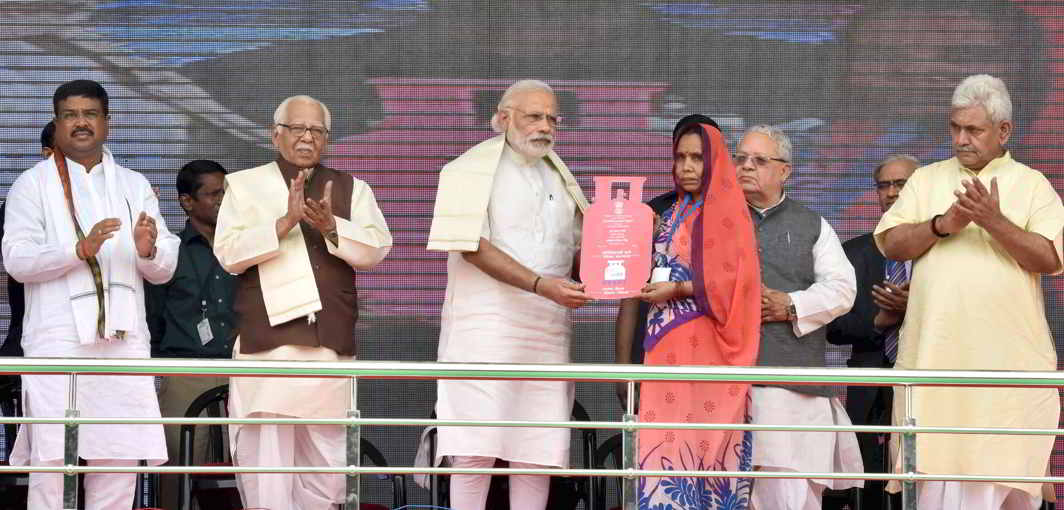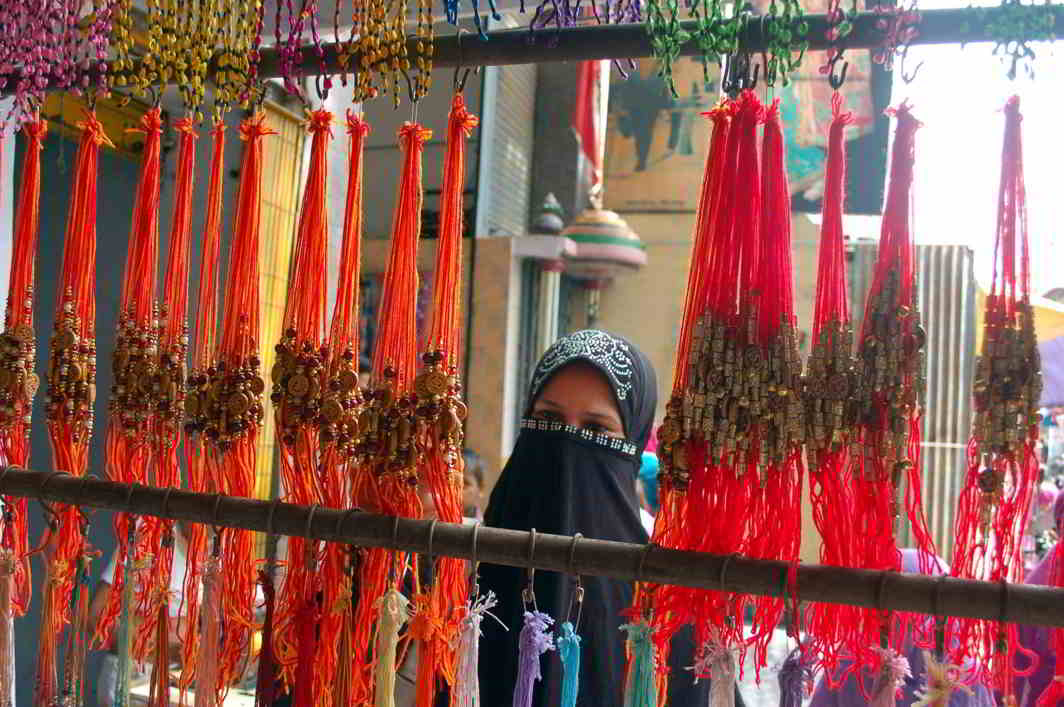
With the saffron tsunami taking a firm hold after the UP polls, what is the way ahead for the party? Will it push agendas like Article 370, the Uniform Civil Code and Ram Temple before the 2019 elections?
~By Kalyani Shankar
The wave has become a tsunami. The ruling BJP and its allies today rule around 70 percent of India and 58 percent of the population. With the Congress effectively losing the electoral space to the BJP, the 2019 general election is what the saffron party will be aiming for now. No wonder former J&K chief minister Omar Abdullah tweeted soon after the BJP victory in UP: “There is no leader today with a pan India acceptability who can take on Modi and the BJP in 2019. At this rate we might as well forget 2019 and start planning / hoping for 2024.”
With such huge expectations, how will Prime Minister Narendra Modi translate this victory into action? Will he be able to complete the unfinished agenda of the BJP and boldly tackle core issues like Article 370, the Uniform Civil Code and building the Ram Temple in Ayodhya? Or will he be constrained by the power he enjoys and the need to take the whole country along? HRD Minister Prakash Javadekar had claimed: “We are committed to the 2014 poll agenda. That will be our mantra. It will be development because that is the aspiration of the people.”
Modi has changed the narrative midway and the only social divisions he spoke of in his victory speech were those of class. He referred to the poor and the middle class tapping the simmering class anger against the rich. His new theme is “new India”, which is what he referred to in his victory speech. “I am seeing a new India, the India of the dreams of the youth. A new India that fulfills the aspirations of our women. A new India that is about opportunities for the poor… The poor are saying, I want to progress and I seek the opportunity from you,” he said, and declared that when India turns 75 in 2022, the BJP will bring in a new India. So in one go, he talked of the poor, the middle class and women, clearly defining his new constituencies instead of the old Bania-Brahmin castes which were the solid support base of the BJP.

Modi’s narrative changed when Congress vice-president Rahul Gandhi had called his government a “suit boot ki sarkar”. He sensed the danger of this class divide. Like Indira Gandhi, Modi was able to catch the imagination of the poor. He changed his image from pro-rich to a champion of the poor. The demonetisation drive is one such move to reverse the perception and Modi succeeded in getting the support of the poor. He is also hopeful that welfare schemes like the Pradhan Mantri Ujjwala Yojana, the Jan Dhan Yojana, Aadhaar and other programmes will bring him votes of the poor. Modi is now backed by a broader coalition of aspirational castes, a kind of Hindu vote consolidation.
So where does that leave the BJP’s unfinished agenda mentioned above? Will the unprecedented victory in UP and other states embolden the PM to take these issues forward?
Modi’s narrative changed when Congress VP Rahul Gandhi called his government a “suit boot ki sarkar”. He sensed the danger of this class divide.
Article 370 requires Kashmir’s Muslim majority to give up the state’s special constitutional status, the Ram Temple requires Muslims to give up their Babri Masjid demand and the Uniform Civil Code requires them to change their personal law. In all three, Muslims have a stake. The BJP, after coming to power, has realised that this is a process that has to be gradual and democratic. So it is pushing those issues in a slow manner.
Regarding the Ram Temple, the party’s public position is that it will abide by the court verdict or a compromise between the two communities. However, Union Culture Minister Mahesh Sharma has already made some discreet moves by proposing a Ram museum in Ayodhya to keep this fire burning. By 2019, this museum will be completed in time for the Lok Sabha polls. Revealing the RSS strategy, its ideologue, MG Vaidya, said after the UP victory that the NDA government should bring a law for the Ram Temple construction if the Supreme Court fails to resolve the issue. “The BJP’s win in Uttar Pradesh reflects backing by the voters of the state for building a Ram temple,” he told a news channel.
As for Article 370, the BJP is stuck. The party is a coalition partner in J&K along with the PDP and has accepted a common minimum programme which does not mention Article 370. Therefore, as long as the coalition continues, this cannot be achieved. This issue will be kept in cold storage till the time it can be pulled out. However, the coalition is getting shaky.
Coming to the Uniform Civil Code, it is a 2014 manifesto promise. Religious minority groups have opposed it saying it would interfere with their codes of conduct. The BJP may adopt a fast-forward approach. The Law Commission, which has embarked on a gigantic exercise of inviting public opinion on the issue, has sought to dispel fears raised by Muslim and Christian groups, assuring that personal laws will not be touched “beyond the extent permitted by the constitution”. In his first interview after receiving over 40,000 responses to a questionnaire on the proposal, Commission chairman Justice Balbir Singh Chauhan reportedly said that the focus of the exercise was only to end gender discrimination and social injustice. The law ministry is even planning to launch a TV channel to discuss important legal issues like the UCC.

The UCC issue is currently gathering momentum on two issues. The first is triple talaq, which Muslim clerics want to retain. The second is polygamy. The BJP feels that through polygamy Muslims multiply faster and at some point, become a majority. Triple talaq is an achievable target and has the potential to get the support of Muslims, particularly young women. The BJP feels that young Muslim women have voted for the party in UP because of Modi’s stand on the issue. Ahead of the election, Modi had asked: “Is it fair for a man to say talaq thrice over the phone and a Muslim woman’s life to be ruined? The government will ensure that constitutional rights of Muslim women are protected. This issue shouldn’t be politicised. There are some political parties which are indulging in vote bank politics and don’t want Muslim women to get their natural rights.”
While the minorities are opposed to the Uniform Civil Code, the BJP feels that young Muslim women have voted for the party in UP because of Modi’s stand on the triple talaq issue.
Economic reforms are also part of the BJP agenda and the huge mandate it has got has given a psychological advantage to Modi. Political stability begets economic stability. Continuity in government policies sends out a positive signal to foreign and domestic investors. Post demonetisation, the government should not lose track of the reform path. For this, the remaining two years of the Modi government may see bolder initiatives.
Modi might attempt to implement the GST, land and labour reforms, besides financial sector ones. Modi’s biggest concern will be creation of new jobs, at least 20 million in the next two years. This involves tackling the banking and manufacturing sector and administrative reforms. Modi might take the black money drive forward by targeting benami holders.
Electoral reforms too need attention. Modi has been talking of simultaneous polls to the Lok Sabha and assemblies. The state funding of elections, transparency in poll funding and curbing the use of black money also need attention, but they will take a while.
The first acid test for the BJP will be the presidential and vice-presidential elections in July. Whatever anxiety the BJP might have had has ended after the spectacular UP results, which has bridged the gap for a victory for the BJP candidate. The NDA now has a vote value of nearly 5.32 lakh votes in the electoral college of the presidential elections, just about 17,500 short of a majority. If the BJP manages to gain support from the Biju Janata Dal (BJD) and the AIADMK, it will take the vote value to 6,28,195, much higher than the required 5,49,442 for a win. The AIADMK and the BJD have been favourably disposed to the BJP. The electoral college for the presidential election comprises of 4,896 legislators—776 members of the parliament and 4,120 MLAs. The value of each vote of an MP has been fixed at 708, while that of an MLA depends on the population of the state he represents. The BJP can elect the vice-president on its own strength.
At present, the BJP has 56 seats in the Rajya Sabha, while the Congress is still the largest party with 59 members. This situation will change as more BJP members come to the House but it may have to wait as only 10 out of UP’s 31 Rajya Sabha seats will come up for
re-election before the 2019 elections.
Will the PM now reshuffle his cabinet? He might do so after the current parliament session ends on April 12. He may weed out some and add some new faces. It will be the 2019 election team as the ministers have to show results.
For all purposes, Modi will try to exploit the present situation and take the country and his party forward in the coming two years unless something unforeseen happens.

